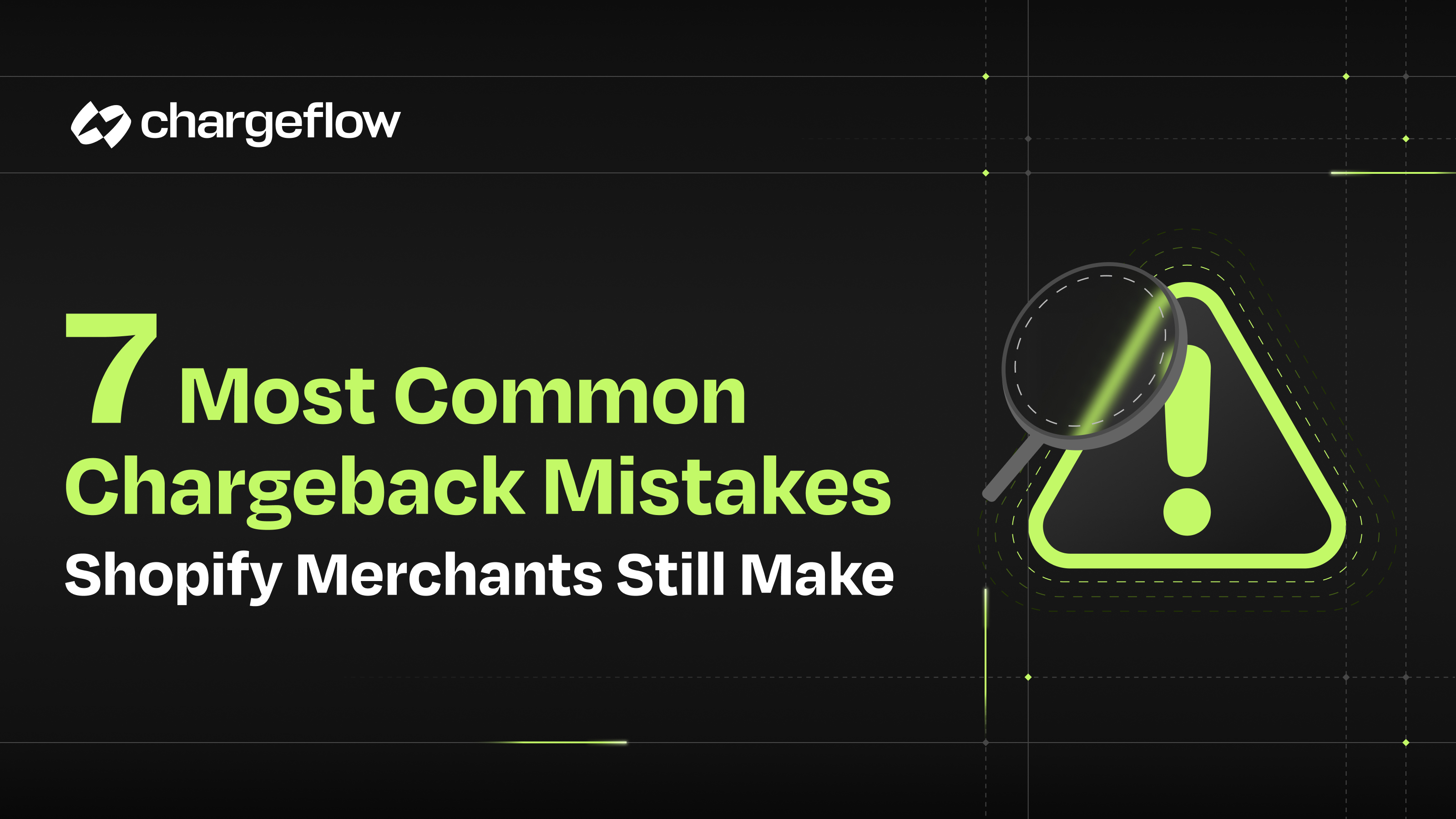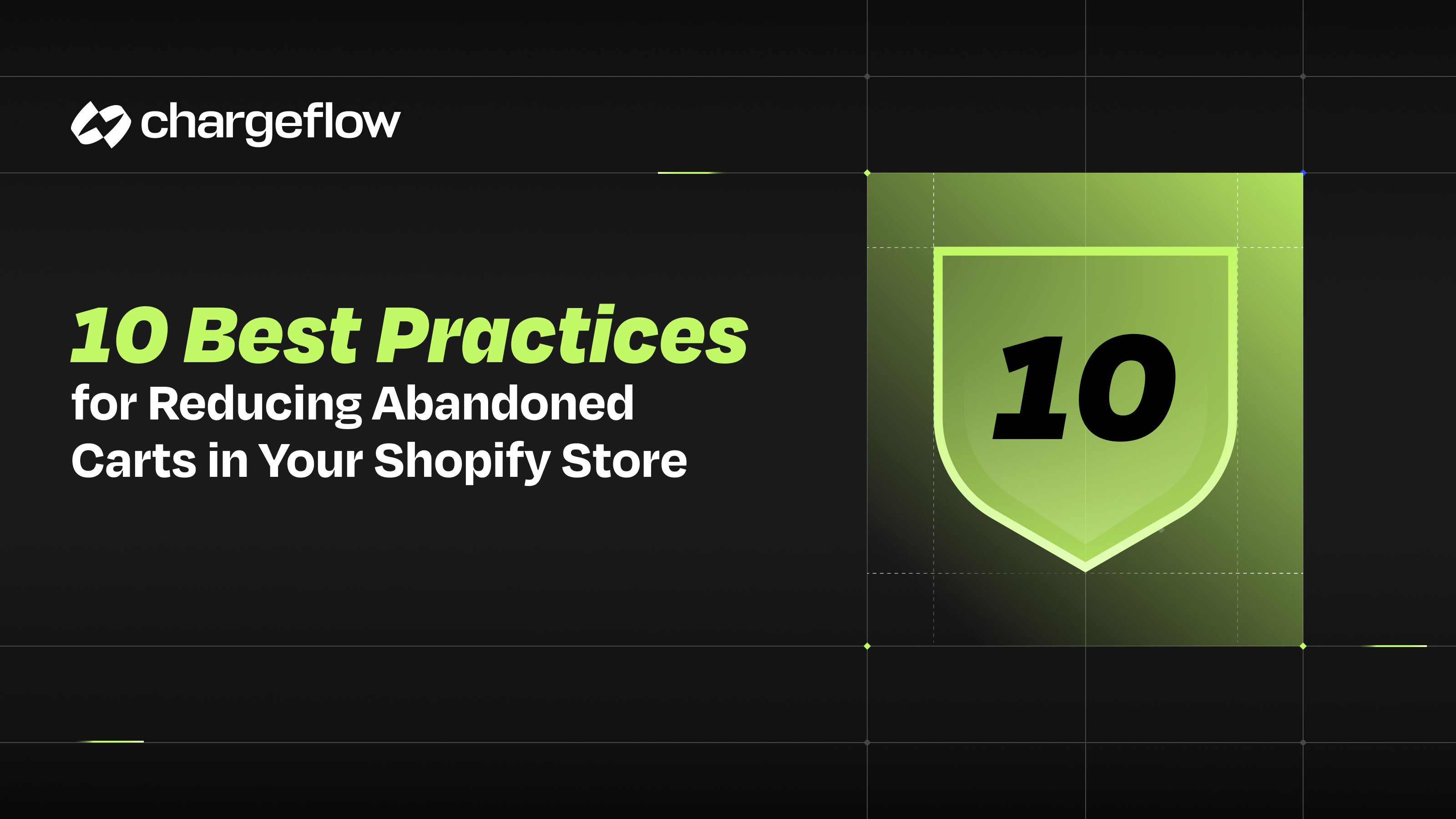10 Subscription Business Risks You Must Avoid (With Fixes)

Chargebacks?
No longer your problem.
Recover 4x more chargebacks and prevent up to 90% of incoming ones, powered by AI and a global network of 15,000 merchants.
Discover 10 key risks of running a subscription business and learn actionable strategies to optimize billing, reduce churn, and scale efficiently.
Subscription-based business models can be incredibly rewarding, but they come with their own set of unique problems. From customer acquisition costs to failed payments, these risks can quickly impact your profitability if not managed properly.
In this blog, we’ll unpack 10 key risks of running a subscription business and how to address them effectively.
1. Struggling to Acquire Customers at a Reasonable Cost
Getting new customers isn’t easy, especially when using a subscription-based business model. Unlike one-time purchases, you ask customers to commit long-term, increasing acquisition costs.
If you’re spending more to acquire a customer than their lifetime value (LTV), your business model is at risk. Since subscription profits accumulate over time, high customer costs (CAC) can drain cash flow.
Here’s how you can address this:
- Find your dream customers: Who are they? Where do they hang out online? Focus your marketing efforts on the right audience to avoid wasting ad spend.
- Play it smart with marketing channels: Invest in cost-effective email marketing, SEO, and content marketing to build long-term customer relationships.
- Tap into the power of word-of-mouth marketing: Referral programs (like ReferralCandy)can encourage existing customers to bring in new ones. Did you know that 92% of consumers trust earned media (like referrals) more than any other form of advertising? Offer a discount, a free month—anything to show your appreciation.
For instance, Evernote offers a referral program where users earn premium subscription credits when they invite friends. Both the referrer and the new subscriber benefit—a win-win strategy.

2. Finding the Right Pricing Strategy
Pricing your subscription service is tricky – charge too high, and customers won’t sign up. Charge too low, and you leave money on the table.
Here’s a strategic approach to overcome this obstacle:
- Conduct market research: Before you even think about setting prices, dive deep into the market. What are your competitors charging? What are your ideal customers willing to pay? Find out the answers to these questions. And don’t just guess—use survey or assessment tools, talk to your customers, and experiment with different pricing strategies to see what resonates.
- Offer tiered pricing: Give your customers options! A basic plan is for budget-conscious subscribers, and premium tiers are for those who want the full experience. Just like Dropbox, which offers Basic (free), Plus, and Professional plans with increasing storage and features. This way, you can cater to a wider range of needs and budgets.

- Let them try before they buy: Offer a free trial or a freemium version of your service. Similar to how Slack offers free trials for Pro and Business+ subscriptions so that users can try its advanced collaboration tools. This allows potential customers to experience the value firsthand. Once they see how your product or service improves their life, they’ll be more likely to upgrade to a paid plan.

- Focus on the value you offer: Don’t just throw a random number out there. Price your service based on the value it delivers. Does it save your customers' time and money? Does it solve a unique problem? If so, make sure your pricing reflects that.
3. Difficulty in Scaling Your Business
Handling a few hundred subscribers is manageable, but what happens when you scale to thousands? Without the right systems, growth can lead to:
- Overwhelmed customer support
- Operational inefficiencies
- Increased costs
How to Address This:
- Embrace automation: Automated revenue recognition tools like Zuora can streamline the process of recognizing revenue over the subscription term, ensuring you’re always in compliance with accounting standards like ASC 606 or IFRS 15. This not only frees up your time but also reduces the chance of human error.
- Invest in a scalable foundation: Your tech stack is the backbone of your business—build it to withstand rapid growth. Use software asset management tools to keep it organized, scalable, and adaptable. Cloud-based solutions like AWS or Google Cloud can help you scale seamlessly.
- Prioritize customer support: Scaling means more customer queries. Implement chatbots or AI-powered support systems to handle common inquiries automatically so that your team can focus on more complex issues.
For example, Intercom is a popular customer messaging platform used by many businesses to provide instant support through chatbots while also allowing for human intervention when needed.

4. Not Delivering Enough Value to Your Customers
A great product alone isn’t enough – subscription businesses must continuously provide value to retain customers.
The risk? Subscriber fatigue. If customers feel they aren’t getting ongoing value, they cancel.
Here are four quick tips to keep your customers coming back for more:
- Use surveys, social media, and one-on-one interactions to understand what they love, what frustrates them, and what they’d like to see next. For instance, Miro regularly conducts user surveys to understand user pain points and gather ideas for new features.

- Introduce new features, updates, and exclusive content that keep customers excited and engaged.
- Use behavioral analytics to personalize the customer experience, from tailored recommendations to exclusive perks.
- Sometimes, the value is there, but customers just don’t see it. So, regularly communicate updates and customer success stories through newsletters, social media, or in-app notifications. For instance, look at how Semrush informs the launch of a new feature, “AI Overview Analysis,” through a detailed newsletter that explains the feature and highlights its key benefits, thus aptly communicating the value proposition:

5. Lacking a Robust Payment Management System
Recurring payments are the lifeblood of your subscription business. Without them, you’re essentially out of business.
However, managing them manually can feel like a never-ending game of whack-a-mole. You’re constantly chasing down payments, dealing with frustrated customers, and worrying about those failed transactions.
To tackle this, you need a robust payment management system that allows you to:
- Automate payment processes: Tools like Stripe can automate the entire payment process, from invoicing to retries.
- Handle failed payments proactively: Set up a dunning management system to send automated reminders and friendly nudges to customers with failed payments. So that you can recover that almost lost revenue and minimize customer churn.
For example, look at how Grammarly automatically sends friendly email reminders to customers to update their payment information. This proactive approach leads to minimum subscription cancellations due to payment issues.

- Stay on top of your receivables: Regularly review your outstanding invoices to identify any overdue payments. The sooner you address these issues, the better your cash flow.
- Offer global payment methods: Cater to an international audience by offering diverse payment options, including local payment methods. This enhances your customer satisfaction and increases your market reach.
- Integrate with accounting tools: Sync your payment system with accounting software like QuickBooks to streamline financial management and reporting.
6. Not Having Flexible Billing Options
People have different budgets and preferences—some might prefer to make monthly payments, while others might prefer to pay quarterly or even annually.
So, if you only offer one or two rigid billing cycles, you might be alienating a lot of potential subscribers. Worse, if they encounter unexpected charges or billing errors, it can quickly erode trust and lead to cancellations.
To make billing a breeze for your customers, you must:
- Offer flexible payment options: Let your customers choose the billing frequency that works best for them. Whether it’s monthly, quarterly, or annually, giving them options shows that you value their individual needs.
- Invest in reliable billing software: Tools like Zuora or Maxio can help you automate billing, reduce errors, and ensure accurate invoicing.
- Be upfront about your pricing: Clearly communicate your pricing structure and any potential changes. Transparency builds trust and helps customers feel confident in their decision to subscribe.
- Make it easy to manage their subscriptions: Allow customers to easily upgrade, downgrade, or pause their subscriptions whenever they need to. For instance, Poll Everywhere offers an easy way to change current subscription plans. All a user needs to do is visit their plans page and select the new plan they want to continue with moving forward!

Platforms like Recurly or Chargebee can help you automatically calculate prorated charges, adjust billing cycles, and ensure a smooth transition.
7. Poor Integration with Other Systems
Imagine trying to run a restaurant without a kitchen, a waiter, or a chef! It just wouldn’t work.
Similarly, if your subscription management software is disconnected from the system, you risk data getting lost in translation, manual work piling up, and valuable opportunities slipping through the cracks.
That’s why you must choose a subscription platform that easily integrates with your existing tools. Look for platforms that offer native integrations or robust APIs to ensure customer data, payment information, and engagement metrics flow freely between your systems.
8. Inaccurate Revenue Recognition
Revenue recognition for subscription businesses can be a bit of a minefield. You need to track that revenue over the entire subscription period, ensuring it’s accurately reflected in your financial statements.
Get this wrong, and you could face some serious consequences, from financial discrepancies to potential audits.
Let’s explore the two most effective solutions for this challenge:
- Use automated revenue recognition tools: Tools like Zuora can automate the process of recognizing revenue over the subscription term, ensuring you’re always in compliance with accounting standards like ASC 606 or IFRS 15.
- Regular check-ups are key: Schedule regular financial reviews to catch any discrepancies early on. This proactive approach ensures your books stay clean and your business remains audit-ready.
9. Mismanaged Inventory (For Physical Subscription Boxes)
Inventory risk might not seem like a pressing issue for subscription-based businesses at first glance, but it can affect your business, especially if you offer physical products.
For instance, let’s say you run a book subscription box service that sends monthly best releases along with customized bookish goodies like notebooks, enamel mugs, tumblers, etc., to customers. You’ve curated a collector’s edition box around a popular fantasy series, including limited-edition bookmarks and custom-made enamel pins.
You anticipated a strong demand for this box, but you significantly underestimated the popularity of the collector’s edition. As a result, you’re quickly running out of stock, and disappointed customers are canceling their subscriptions.
On the flip side, if you had overestimated demand and overstocked the supplies, you’d be left with a surplus of these boxes.
So, how do you navigate inventory risks? Let’s find out:
- Leverage the power of data-driven forecasting: Analyze past sales trends and use predictive analysis to forecast future demand.
- Build relationships with flexible suppliers: Find suppliers who can quickly adapt to changes in demand. This way, you can easily scale production up or down as needed, avoiding both overstocking and understocking.
- Adopt a Just-in-Time (JIT) inventory model: Order products only when you need them to minimize the risk of excess inventory. This requires careful planning and a reliable supply chain, but it can significantly reduce your holding costs.
- Diversify product offerings: Mix things up! Offer a combination of evergreen products with steading demand and seasonal items to cater to changing customer interests.
- Consider on-demand outsourcing: Instead of holding large amounts of inventory, consider partnering with on-demand manufacturers. For example, the book subscription box service can use print-on-demand services to produce custom-made goodies for the box as orders come in, without managing inventory.
10. Losing Revenue Through Leakage
Revenue leakage is one of the silent killers of subscription-based business models. It refers to all those unnoticed losses—incorrect billing, missed payments, service outages—that slowly drain your revenue. While the amounts might seem small at first, over time, these leaks can accumulate into significant financial losses.
You can effectively address these issues by:
- Automating billing systems: Using an automated billing system like Chargebee reduces manual errors and ensures accurate invoicing. As a result, you can automatically apply the correct charges, discounts, and taxes, minimizing human oversight.
- Invest in monitoring tools that track your service uptime: Service outages can lead to significant customer dissatisfaction and revenue loss. By using tools designed to track your service uptime, you can identify potential issues in real-time, enabling swift resolution to maintain seamless customer experiences and reduce the risk of churn.
- Invest in monitoring tools that track your service uptime: If something goes wrong, you’ll be alerted immediately, allowing you to resolve the issue quickly and minimize customer disruption.
- Conducting regular revenue audits: Run periodic revenue audits to identify and address any potential leaks.
Key Takeaways
Subscription-based business models aren’t risky at all if you implement them the right way. Here are five quick takeaways from this article:
- Use automation to handle recurring tasks like billing and revenue tracking to reduce errors and save time.
- Accurate, timely revenue tracking is crucial for compliance and strategic decision-making.
- Provide customers with choices in billing schedules to enhance their experience and reduce churn.
- Deploy subscription-management software that can integrate with other systems for a seamless data flow and efficient operations.
- Detect and fix revenue leaks with automated billing, diligent payment tracking, and regular financial reviews.

Chargebacks?
No longer your problem.
Recover 4x more chargebacks and prevent up to 90% of incoming ones, powered by AI and a global network of 15,000 merchants.






























.png)








